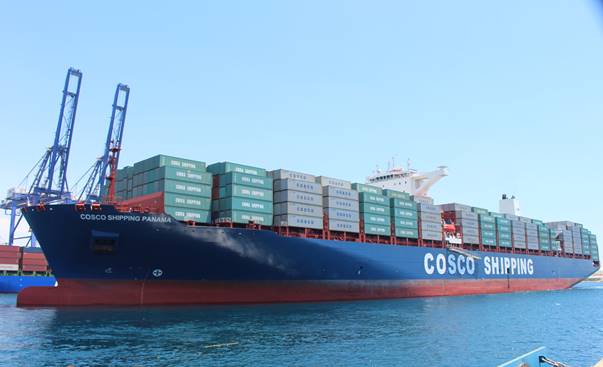SMU Community Chat

Tanners Q&A, Round 2: What Goes Up Comes Down - and Fast
Written by Michael Cowden
June 14, 2021
SMU’s Community Chat webinar with Bank of America metals and mining analyst Timna Tanners last week was our second-best attended ever.
Barry Zekelman, executive chairman and CEO of Zekelman Industries, still holds the title. But Tanners gave him a run for his money.
We received more questions during the webinar than we were able to respond to during our 45-minute time slot, so we followed up with Tanners to get answers to some of the questions she couldn’t get to live. Below is a lightly edited version of Round 2 of our Q&A with Tanners.
Questions are from the SMU Community. Answers are from Tanners.
 Also, public service announcement, Tanners will speak at the SMU Steel Summit in Atlanta on Aug. 23-25. So sign up here if you’d like to go for Round 3 then.
Also, public service announcement, Tanners will speak at the SMU Steel Summit in Atlanta on Aug. 23-25. So sign up here if you’d like to go for Round 3 then.
Do you think the consolidation of domestic production could result in better supply management?
The one area that really was consolidated was exposed auto applications. Near-term options are limited to Cliffs and U.S. Steel, instead of ArcelorMittal USA, AK Steel and U.S. Steel as the “big three.” So auto guys may pay more. But they also will seek extra supply from Stelco and ArcelorMittal Dofasco – and perhaps Ternium and others. It’s clear from our conversations with Nucor and Steel Dynamics that the auto guys are courting them aggressively, and they could get expedited qualification as a result. So in two years that dynamic of limited suppliers changes.
What are your thoughts on steel tariffs (Section 232) under the Biden administration?
They likely come off Europe by year end. And that could also trigger a removal from Japan and other trade partners. The new capacity will make the U.S. more self-sufficient, with imports less necessary. But it’s still an issue if U.S. prices get too far out of whack with global levels.
Will you reiterate your average HR pricing for 2022? And when do you think Steelmageddon® will happen?
It is currently $575 per ton, but it can change – and likely will, as always! Visibility that far out is challenging, but we explained the basis for that view. Regarding Steelmageddon® timing, we say it is pushed out a year because the new supply is delayed.
How long do you expect China to temper their environmental goals to manage inflation?
Regarding China and how long it is tempering environmental goals, it’s hard to say. I think certainly so long as prices are well outside of normal ranges. I also think they can pursue emissions reductions without reducing supply, with carbon containment measures, scrubbers, more EAFs, etc.
How many tons of old capacity have gone offline since 2020?
None we know of. Capacity pre-COVID has pretty much all restarted, maybe some OCTG I’m missing? The permanent closures, i.e., Ashland Works (Cleveland-Cliffs) and Great Lakes Works (U.S. Steel), were earlier.
How do HRC prices average below $600 per ton in 2022 with 10 million tons of new flat-rolled EAF capacity driving U.S. scrap demand to never-before-seen levels?
The below $600 per ton price presumes some decline in scrap prices. Scrap prices have already bucked expectations, staying relatively depressed despite record steel prices. Lower iron ore prices and good HBI/DRI availability can help keep a lid on scrap prices. But, certainly, higher scrap prices will dictate a higher steel price.
As steel prices continue to rise, what is your view of “demand destruction”? When will end users say “enough is enough” and severely curtail buying?
Good one. Generally the industry surveys show that customers are more concerned with supply than prices. They are worried about getting enough steel rather than fretting over price. However, recently I was on a call with my alternative energy colleague who said that their projects were indeed getting delayed due to high materials costs. So in general, the answer is projects are going ahead. But there are some examples of delays, including some for lack of materials altogether. The other point I would make is that as the market actually experiences the extent of the run-up, it’s possible that changes. If a project was almost done and waiting for some steel, clearly it completes the job. But perhaps new jobs are getting reconsidered or downsized due to materials costs.
What is to prevent the mills from keeping capacity low in order to maintain record-high profits? Why not produce less steel and make more money?
I guess I disagree with that premise as nearly every mill is producing as much steel as possible. We don’t subscribe to the view that the mills are purposefully restricting supply.
With inventory levels still low, do you expect a sharp correction or a soft correction at the end of the year?
I think it’s worth noting that hot-rolled coil prices rose dramatically from sub-$500/ton. When supply exceeds demand, that can reverse. Inventories can quickly replenish. This has happened before. If prices can jump hundreds of dollars on a monthly basis, I’m not sure why it can’t drop at the same pace on the way down! … Apparently I was called the industry’s biggest bear! I prefer skeptic or voice of reason. But hey….
By Michael Cowden, Michael@SteelMarketUpdate.com

Michael Cowden
Read more from Michael CowdenLatest in SMU Community Chat

SMU Community Chat replay now available
The latest SMU Community Chat webinar reply is now available on our website to all members. After logging in at steelmarketupdate.com, visit the community tab and look under the “previous webinars” section of the dropdown menu. All past Community Chat webinars are also available under that selection. If you need help accessing the webinar replay, or if your company […]

SMU Community Chat: Posner talks state of global logistics
While shipping and supply chains have always been subject to wars, pirates, privateers, geopolitical issues, and natural disasters, it seems that “it’s been busier lately when it comes to dealing with significant supply chain disruptions,” according to logistics expert Anton Posner.

SMU Community Chat: April 17 with AGC chief economist Ken Simonson
Ken Simonson, chief economist for The Associated General Contractors of America (AGC), will be the featured speaker on the next SMU Community Chat webinar on Wednesday, April 17, at 11 a.m. ET. The live webinar is free. A recording will be available free to SMU members. You can register here.

SMU Community Chat replay now available
The latest SMU Community Chat webinar reply is now available on our website to all members. After logging in at steelmarketupdate.com, visit the community tab and look under the “previous webinars” section of the dropdown menu. All past Community Chat webinars are also available under that selection. If you need help accessing the webinar replay, or if your company […]

SMU Community Chat: April 10 with Mercury Resources CEO Anton Posner
Mercury Resources CEO Anton Posner will be the featured speaker on SMU’s next Community Chat webinar on Wednesday, April 10, at 11 a.m. ET. The live webinar is free. You can register here. A recording of the webinar and the slide deck will be available only for SMU members.
